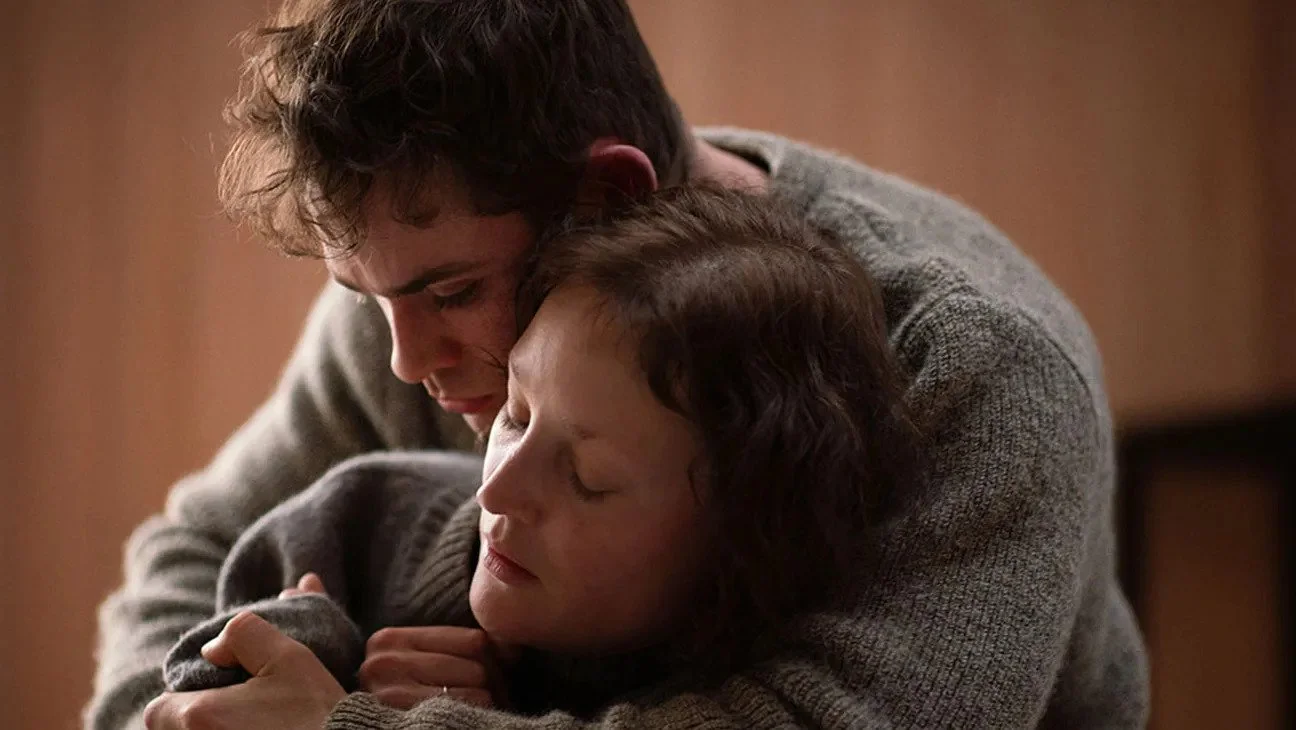Review: The gorgeous, ghostly ‘Went Up the Hill’ strains to connect
2025 / Dir. Samuel Van Grinsven
☆ 3.5/5
When someone close to us dies, there’s always something left unsaid, a question unanswered that we wish we could ask but can’t. When Jack (Dacre Montgomery, Stranger Things) shows up at the funeral of his mother, Elizabeth, it’s the hope of understanding why she abandoned him as a child. For her widow, Jill (Vicky Krieps, Phantom Thread), it’s why Elizabeth chose to take her own life and leave her, as well as another mystery: why does Jack think Jill invited her to the funeral when she did not know Elizabeth even had a son?
That latter question is quickly resolved. Jill lets Jack stay in Elizabeth’s cold, avant-garde New Zealand lakeside lodge. The first night, and each night after, the ghost of Elizabeth takes turns possessing her son and the widow, presumably giving both the potential opportunity to have closure. As the nights continue, both start to have serious questions about what Elizabeth is doing with them while they’re “possessed” and if she has intentions beyond helping both of them move on.
Went Up the Hill (it’s better not to put too much thought into the cute nursery rhyme connections of the title and character names) is a deconstructed ghost story with most of the supernatural and horror elements stripped away. Instead, it’s a quiet yet meticulously constructed film about two people who are both literally and figuratively haunted. We never see Elizabeth’s ghost, but her presence is felt both in the shared mannerisms conveyed by Krieps and Montgomery, who each have to play her ghost, and in the art direction, which is the true highlight of the film.
Built around an incredible New Zealand lodge that’s a monochromatic mix of wood, concrete, and blackness—like a mix of designer Rick Owens and the Icelandic band Sigur Rós—every object, piece of clothing, and visual frame feels purposeful in conveying the claustrophobia and cold chokehold the presence of Elizabeth has on these two people. Australian cinematographer Tyson Perkins beautifully photographs every scene, whether it’s in the house or the wintry, mountainous landscape, while creating tight frames that box in the characters, as in one scene where Jack and Jill are locked in two separate bathroom mirrors.
An incredible amount of thought went into making each frame visually exquisite and each object in the house purposeful, but the script leaves a bit to be desired. Krieps and Montgomery give subtle, soulful portrayals that elevate what are two thinly written characters that never truly connect, which is crucial for elevating this film to something truly extraordinary. Elizabeth only haunts them at night, leaving the opportunity for daytime sequences where the two characters should either be dealing with what has happened to them or creating a bond. Neither of which happens, and what little time is spent during the day is just spinning wheels until the sun sets.
Went Up the Hill starts by taking intriguing risks, such as its stripped-back approach to the ghost story and visual storytelling, which reaches a peak with a truly bonkers erotic centerpiece I don’t want to spoil. Instead of continuing to push, the film settles for muted horror thriller cliches it seems to be trying to avoid in its third act. Even still, with excellent performances and top-tier cinematography and film production, Went Up the Hill is an arthouse watch worth it for the curious.
Watch if you like: Ingmar Bergman (specifically: Persona, Cries & Whispers, and Autumn Sonata) and if you vibe with Ari Aster’s mommy issues but don’t like all the hyperviolence and spooky stuff.

